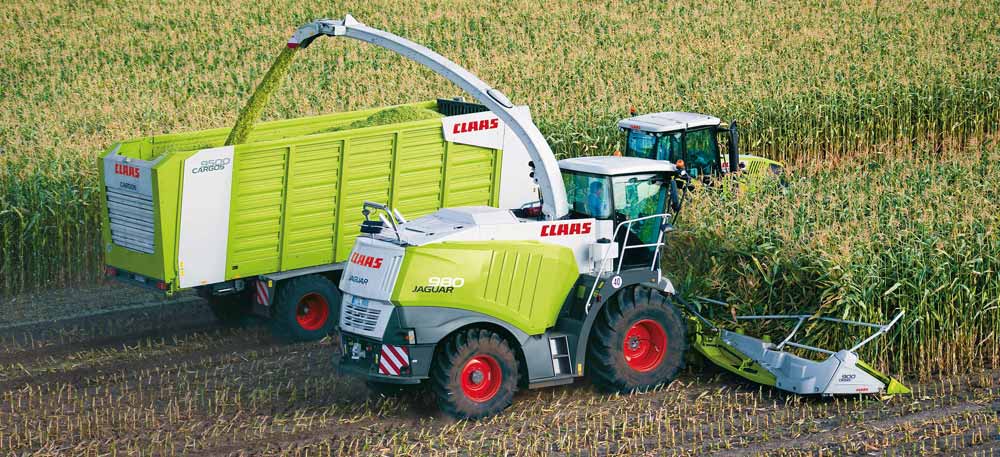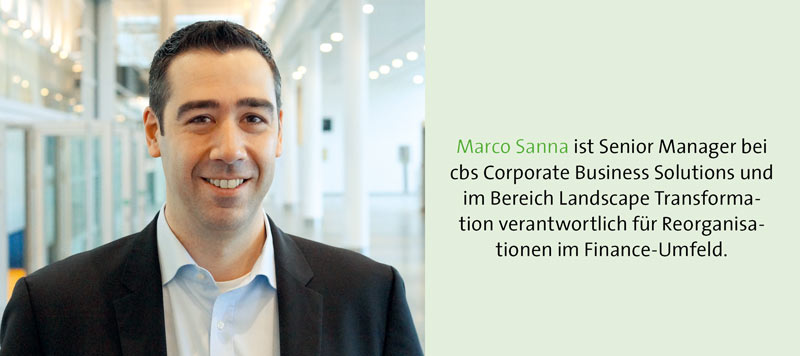One Financial Language


When August Claas founded a company for the production of straw binders in 1913, it only took 30 words to register the business. A good 100 years later, the administrative effort for the company can no longer be compared to this, as the former craft business has now become an international company with around 30 group companies.
Global expansion into over 20 countries presents many challenges: Serious differences in the business processes at the various locations made reporting and controlling more difficult at Claas.
This was one reason for the decision to harmonize the 15 different charts of accounts that had arisen in the course of the company's growth across the Group. Claas wanted to standardize the different ways of working in the various organizations.
Minimize the effort involved in annual financial statements
Previously, each company posted its business processes according to its own system, so that one and the same transaction - for example the posting of an incoming invoice or a provision - could appear in a different account at each location.
Dietmar Große Vogelsang, Head of Controlling/Accounting at the holding company, explains the consequences of this diversity for Group reporting:
"As the business processes were not carried out uniformly at different locations, there were often differences between reporting in accordance with the International Financial Reporting Standards (IFRS) and the internal management income statement.
This always required a great deal of coordination between the individual companies and led to contradictions, questions and a lot of searching in the annual financial statements."
A globally standardized operational chart of accounts for all companies should make internal accounting processes efficient and consistent.
Standardized reporting structures
The aim of the project was a Standardized Chart of Accounts (SCoA) with standardized accounting processes and reporting structures. The concept was complicated by region-specific requirements:
In individual countries, legally binding regulations apply as to the number ranges in which certain transactions are to be recorded - and these national regulations differ considerably in some cases.
In order to meet both the legal requirements and to enable company-wide harmonization, the project team took a two-pronged approach in the countries concerned: in addition to the standardized operational chart of accounts, there are now also local alternative accounts that meet the respective requirements.
Claas brought cbs Corporate Business Solutions on board as a partner. The specialists from the Heidelberg-based management consultancy not only look at the transformation from a technical mapping perspective, but also always have process-related effects in mind.
Increase efficiency with change management
Before the actual transformation, it was necessary to harmonize the internal business processes.
"This represented a major challenge, but was the basis for our SCoA project, with which we wanted to create the greatest possible efficiency and transparency throughout the Claas Group"
says Dietmar Große Vogelsang, who as project manager was responsible for the success of SCoA.
Initially, change management was primarily concerned with organizational and administrative issues. For example, the team had to establish binding rules for all companies involved as to which processes would be posted to which accounts in future and according to which criteria - such as countries, regions or product categories - the postings would be grouped.
The data from the specialist departments also had to be integrated into the standardized chart of accounts: This required interfaces that could be used to import the information from various departments, from customer service to sales to HR, into the central profit and loss account. The result, a uniform group-wide chart of accounts, later served as a mapping for converting the accounts.
Conversion schedule
The experts from cbs were already important contacts in this phase, whose business, methodological and technical knowledge was helpful in the planning. In close coordination with the process consultants, the Claas project team decided to convert the productive system to a standardized chart of accounts in four waves.
This was an important decision in order not to overload the resources in the specialist departments and IT departments of the companies involved. In the first phase, the new chart of accounts was introduced in the eleven German Group companies.
In the second step, the changeover took place in seven subsidiaries, including China, Argentina and the UK. The remaining foreign subsidiaries (India, USA, Poland, Italy, etc.) will follow in waves three and four, which will be implemented gradually over the next one and a half years.
The conversion was carried out retroactively across the entire history, so that all information is available to users again in the new structure - just as if the data had always been saved using the new method. In addition to the SAP system, cbs also converted the connected archive system.
Minimally invasive procedure
The M-cbs project methodology, which cbs developed specifically for SLT projects, was used for the complex transformation processes at the Claas Group. The Heidelberg-based management consultancy has been working very successfully with this method for SAP-supported transformation and optimization projects for more than 20 years, and it quickly led to the goal at Claas.
In order to standardize the numerous charts of accounts, they had to be converted in the ERP system. With the help of the standard software cbs ET Enterprise Transformer, the conversion was minimally invasive, i.e. without having to complete existing processes before the transformation.
Within just 24 hours, more than one billion data records were converted in the go-live. The reason for the record-breaking speed: a web store is connected to the Claas production system, which can only be taken offline for a few hours.
With the completion of waves one and two, Claas has overcome the first hurdles on the way to a standardized operational chart of accounts. SCoA project manager Dietmar Große Vogelsang is very satisfied with the progress of the project so far and has gained an important insight:
"Chart of accounts harmonization on this scale doesn't work without expert support - and we received that from cbs. However, it is just as important to meticulously prepare such an extensive transformation as a company in order to design the business processes sensibly and map them as accurately as possible."
30 companies - one financial language
After intensive discussions, careful planning and the technical implementation by cbs, Claas has come a significant step closer to its goal of a globally common financial language.
The uniform language in the area of Finance & Reporting not only offers structural advantages, but also simplifies communication between the various locations and companies, as their processes are now aligned.
The fact that an incoming invoice is posted to the same accounts in Spain as in Germany or China finally makes IFRS reporting comparable with the internal management income statement.
This provides the controlling or accounting departments with a quick and complete overview of global finances. It also makes it possible to define specific packages of measures for individual cost blocks or to prepare or make important management decisions.
We are one group, we speak one financial language - that was the goal. This progress serves the company as a basis for further developments, including making the accounting system fit for digitalization.
The roadmap for this has already been drawn up: as a first step, Claas wants to define binding standards in order to standardize corporate processes as far as possible in the spirit of a One Global Corporation.
The aim is to create the conditions for the planned digitalization and automation - so that the accounting system becomes just as modern and efficient as the technology leader's globally sought-after agricultural machinery.








